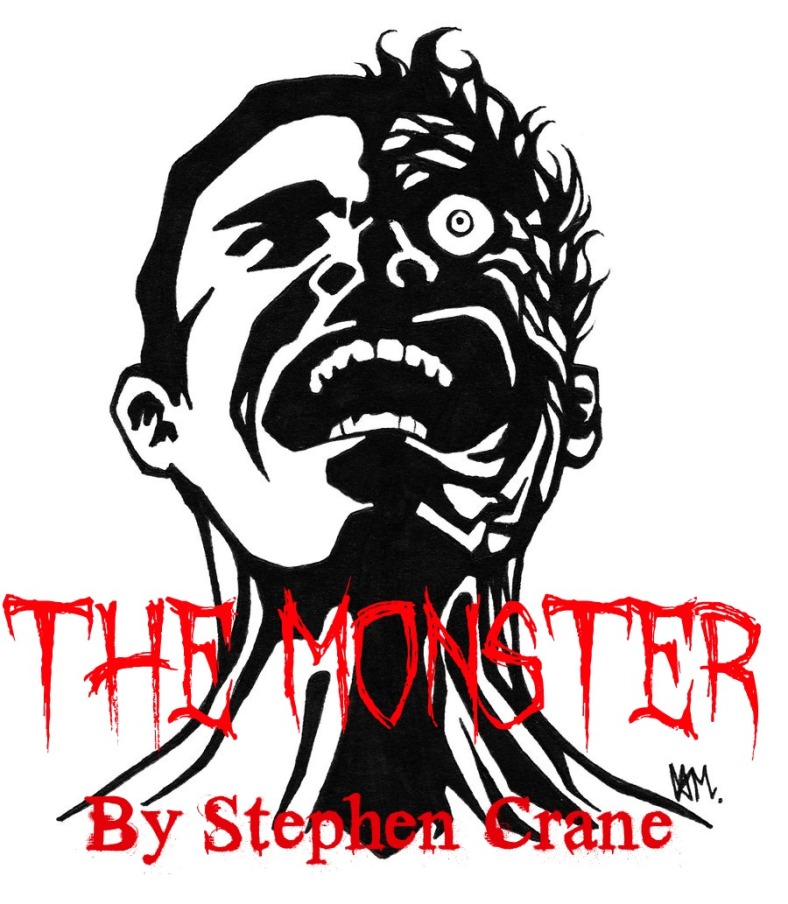Before even beginning to read Stephen Crane’s “The Monster,” my mind couldn’t help my remember the story of Frankenstein. If there’s any gothic novel with a “monster” in it, that novel has got to be number one on my list. The further I got into Crane’s story, the more similarities I saw with Mary Shelley’s Frankenstein.
In Crane’s story, Henry is considered a monster, literally, because of his physical disfigurement as the result of being in the house fire. The deformities were so severe that people saw him as “without a face” or completely horrifying to look at. They really treated him like the undead! The once respected and well-dressed man, was now a local threat, a scary ugly monster.
Figuratively speaking, Henry represents the unjust treatments of “the other” in Crane’s society. This story is set in a time where racism and inequality were still ongoing. Monstrosity and being “other” goes hand in hand. It is important to mention that Henry was a black man. As we read earlier in the story, he was described as a sort of gentleman and well-liked among the townspeople. Though, because of the color of his skin, Dr. Trescott’s decision of allowing him to live becomes a big deal. He is uncommon and pushes the boundaries of what kind of man society sees him as.
I believe that the monster is not actually Henry. Yes, we can argue the figurative meaning of him representing “the other,” but he was actually a kind-hearted man. He was a hero! The reason why he suffered all these scars and deformities was because he tried saving a little boy from a burning house. While all these firemen were trying to claim who got there first, or continuously figuring out how to put out the fire, Henry was inside doing all that he could. Still, this hero is looked down upon and questioned if he deserved to live.
Crane shows Henry as “The Monster” as Shelly has The Creature in “Frankenstein.” In both stories, we see that the “monsters” aren’t really bad in nature. They’re victims. The real monsters are the people who treat them inhumanely. The hurtful words, the way people look at them and how they distance themselves from these characters are so wrong. Crane’s monster is not Henry, but the townspeople. Shelley’s “Frankenstein” is commonly associated with the deformed green monster, when in actuality, Frankenstein was not even the “monster.” He was the scientist / doctor that brought “the creature” to life. Though, as the saying goes, “Knowledge is knowing Frankenstein is not the Monster. Wisdom is knowing Frankenstein is the monster.” The saying rings just the same for Crane’s story.
This is a cartoon sketch of Batman’s Half Face / Two Face (I seriously call him both), which reminds me of the description of Henry’s character. It shows a sort of agony and definitely has a monster-like feel to it which really suits the story.
ORIGINAL PHOTO CREDIT
Photo Editor: Ribbet

Hi Clarissa,
I totally agree with your point that Henry is the victim of the story and that it is the townsfolk who can be seen as the true monsters of the story. Along with noting that figuratively it is because he is a black man in a society that is still extremely racist which only heightens this view point of Henry in this manner. Although I wonder would Henry be treated better if he had been a white man in the situation? Or perhaps would he have fared better if this were to happen to him in our modern society now?
– Ash
LikeLike